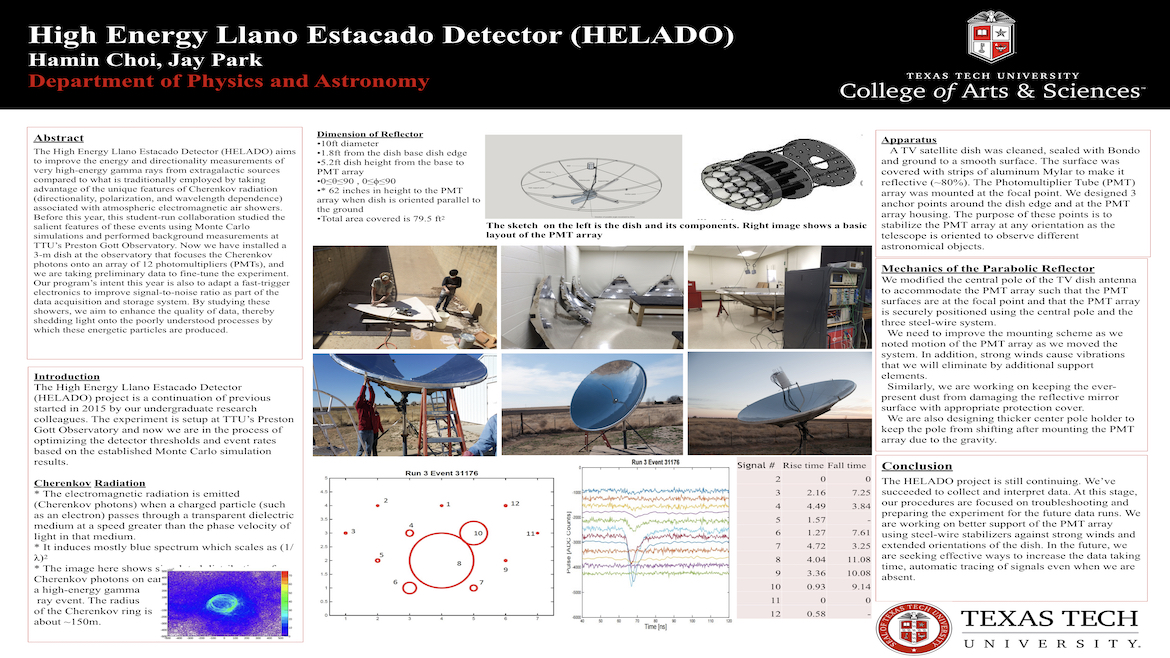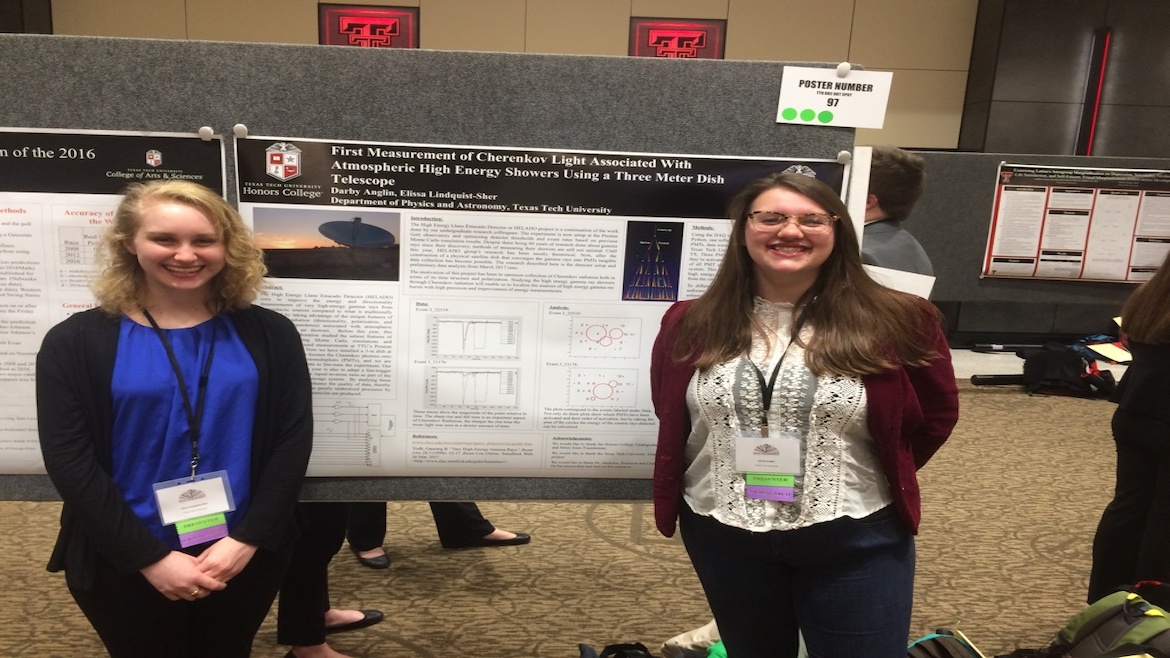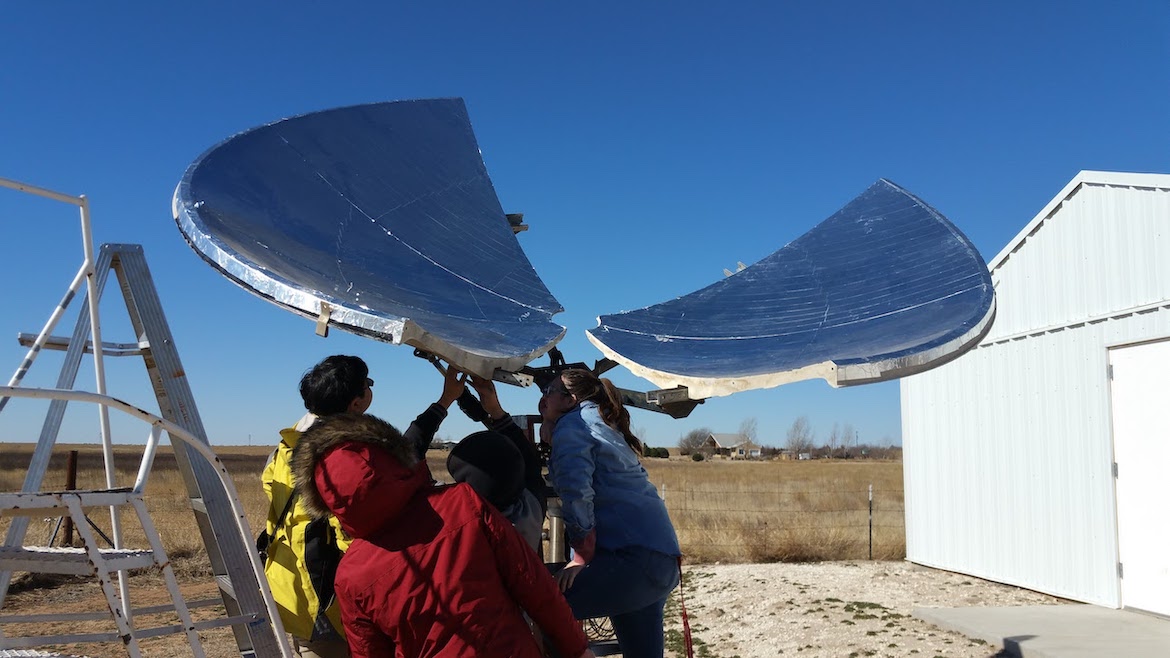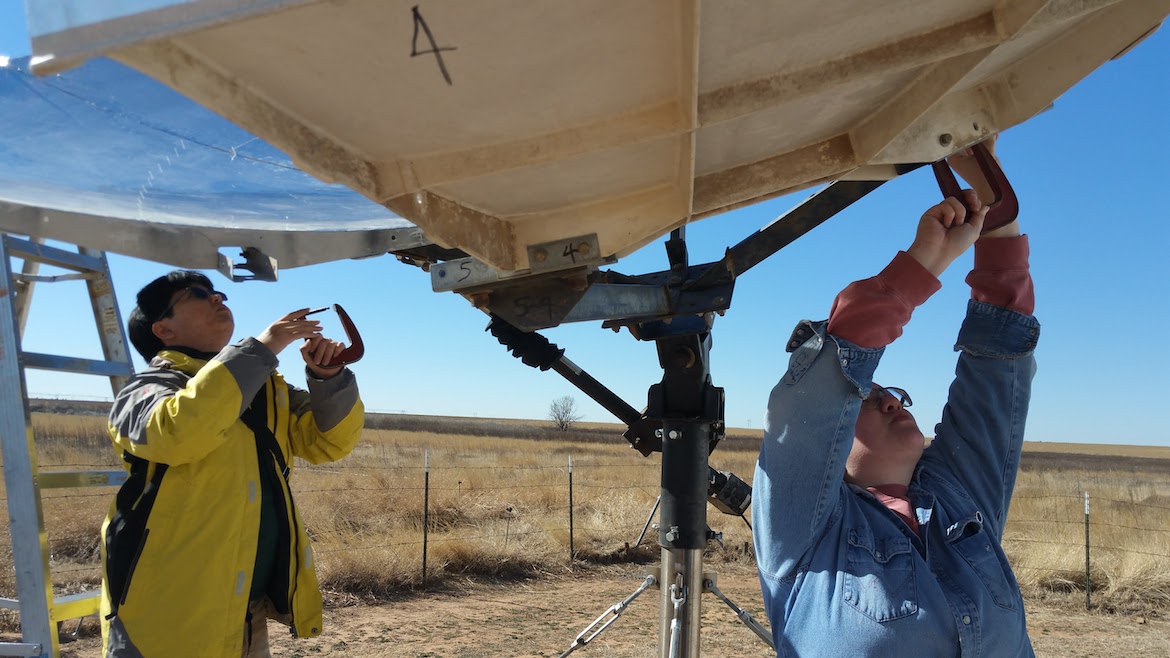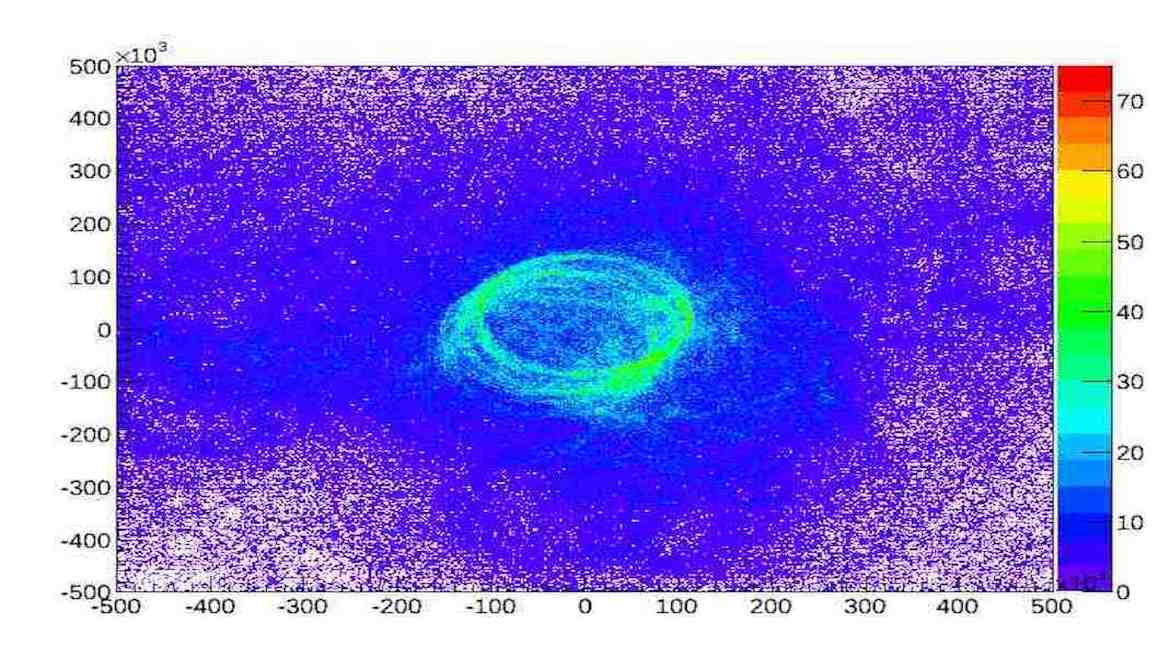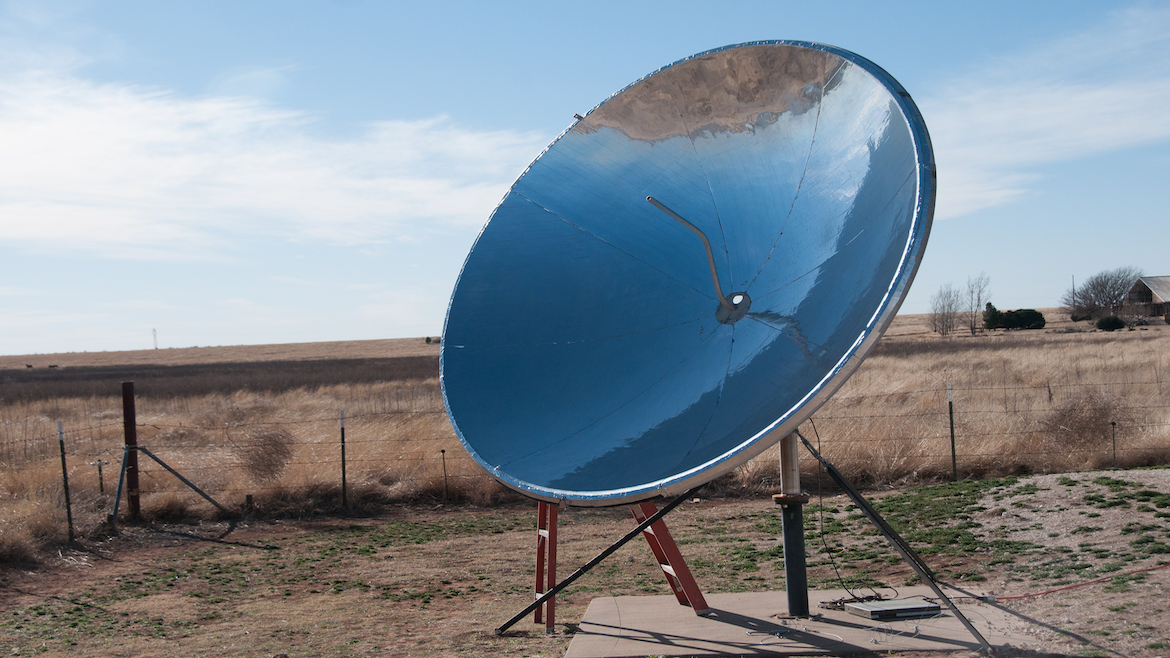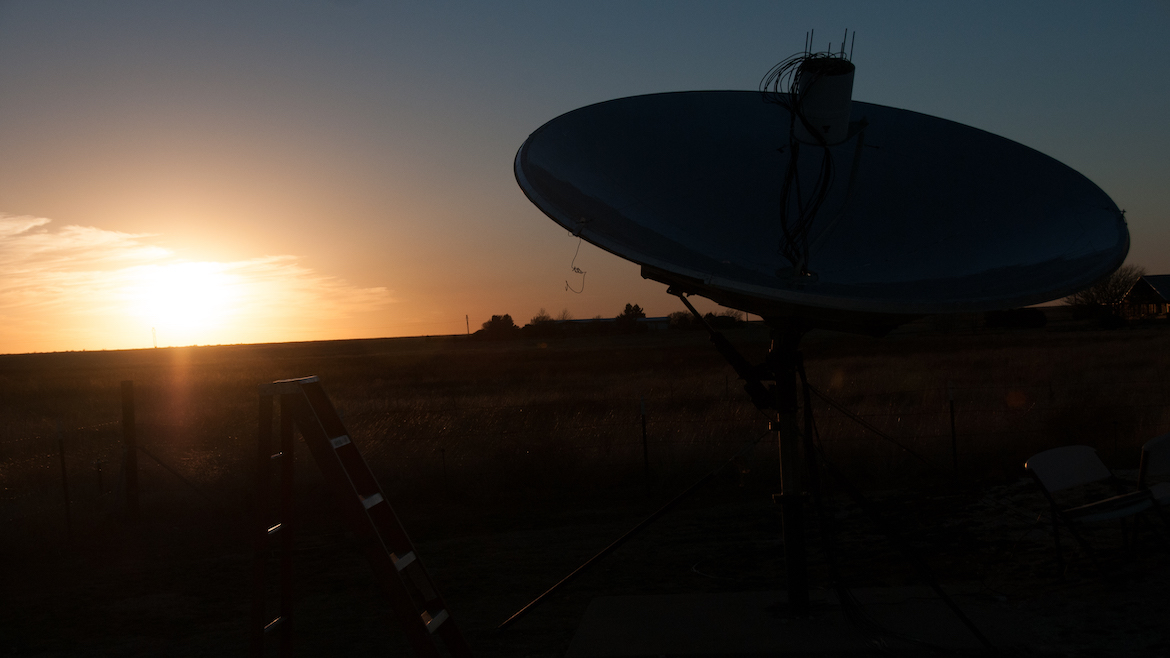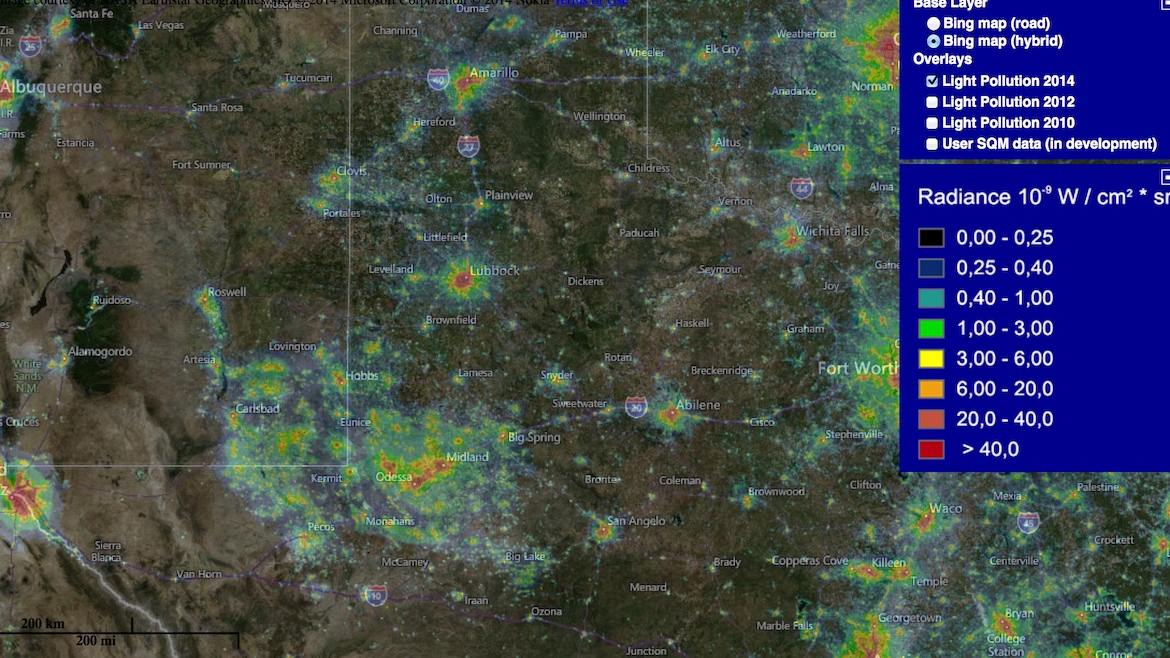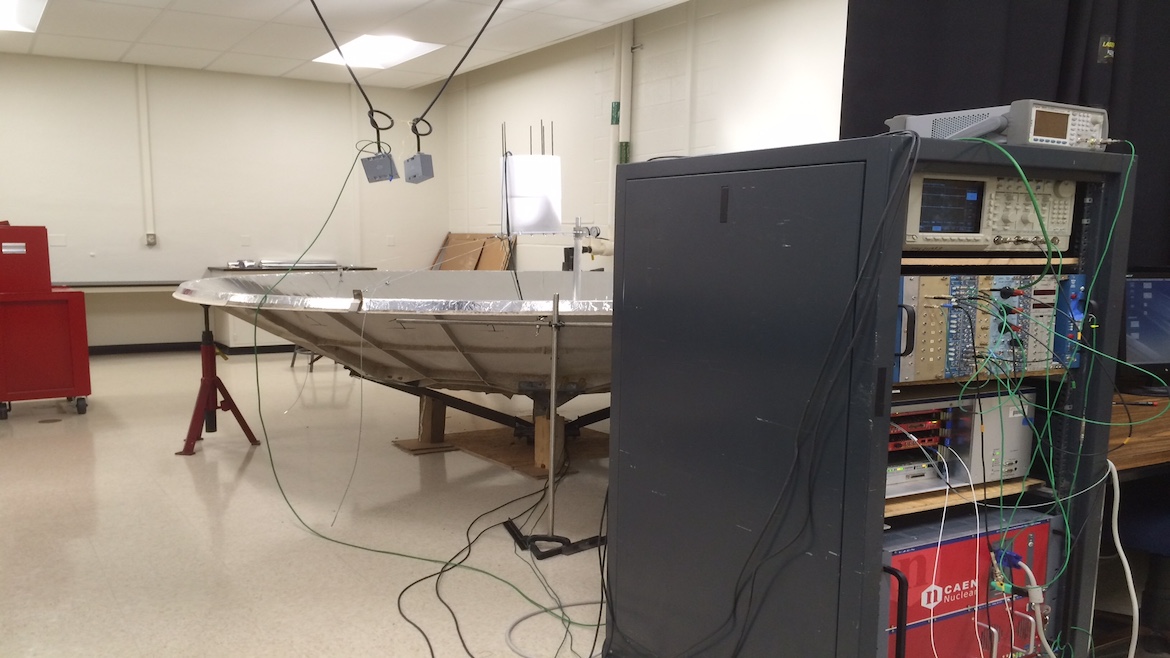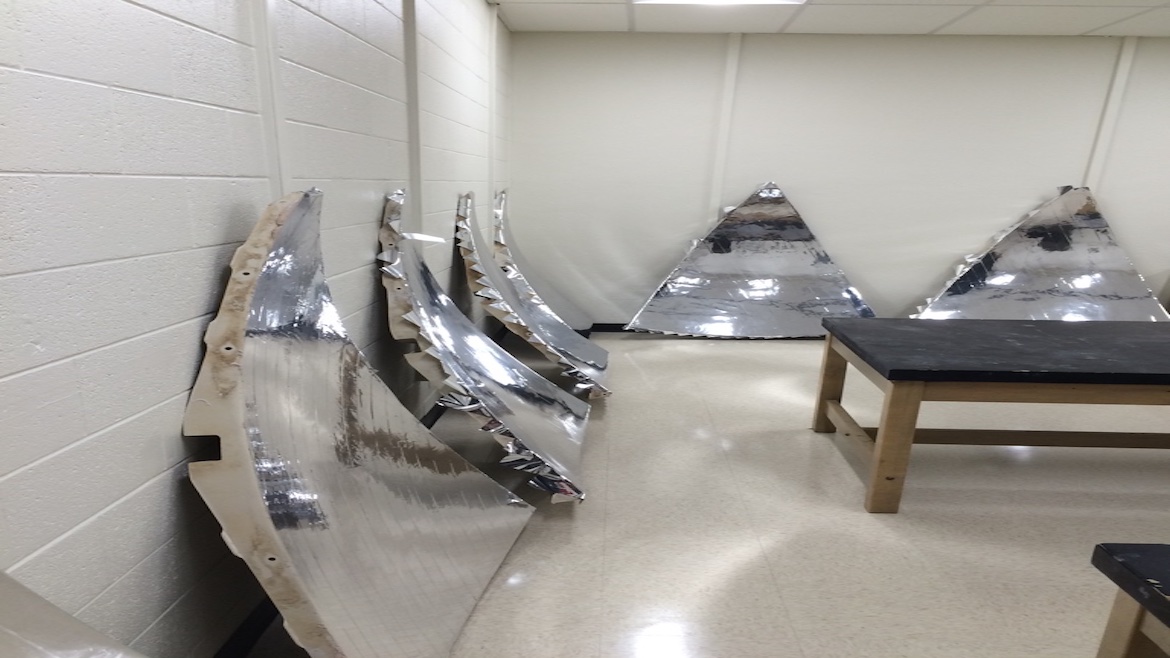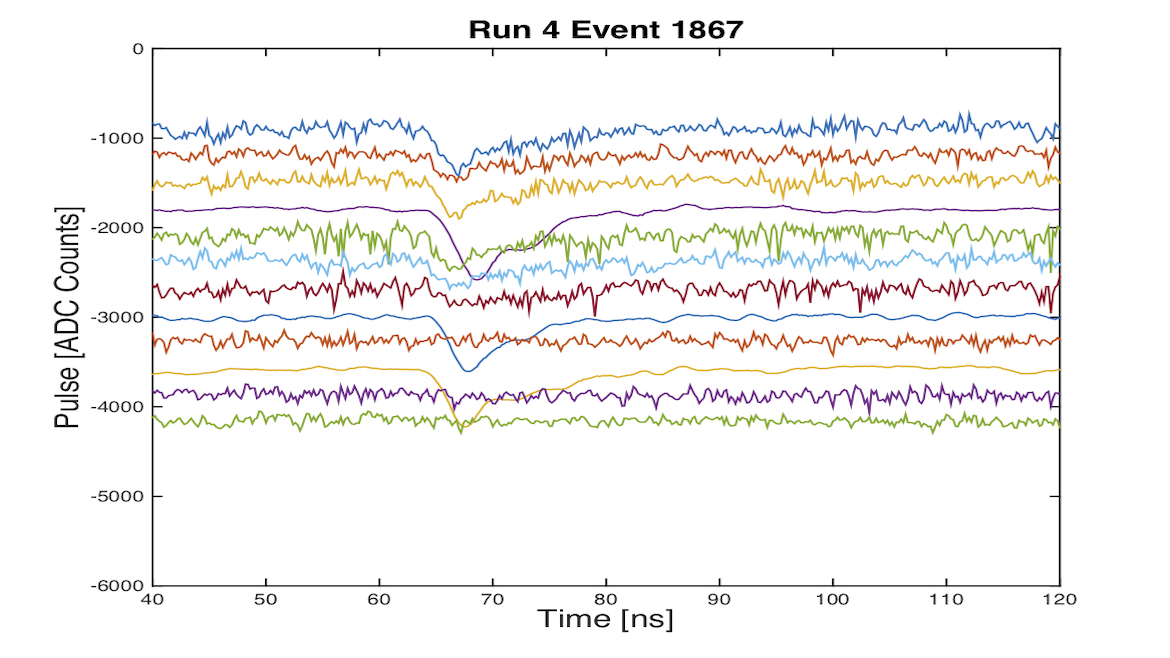HELADO
The "High Energy Llano EstAcado DetectOr" (HELADO) collaboration uses novel techniques to detect very high energy galactic and extragalactic gamma rays with improved energy resolution and directional precision. The experiment will likely provide new perspectives on the origins of these particles and explore supernova remnants, active galactic nuclei, blazars, and other astronomical sources with a very wide acceptance and high duty cycle. When fully completed, HELADO will be a unique experiment that is run by undergraduate researchers and that stands at the intersection of gamma-ray astrophysics, particle physics, and cosmology. It will lead to thesis work in a broad spectrum of topics in physics, mathematics and engineering.
There are at least three features that make HELADO unique among experiments that study high-energy gamma rays through Cherenkov radiation. The first feature is its use of polarization of Cherenkov radiation to enhance signal-to-noise ratio. The second is its full-sky (or nearly 2pi) acceptance without imaging. And the third experimental feature is its use of very high-speed digitizers (5 GS/s 12-bit ADCs) to sample photomultiplier signals at a high bandwidth (>700 MHz) coupled with high-level triggers to select useful data. These notably unusual approaches are worth exploring now because any one of these concepts may potentially alter the way we study high-energy gamma-ray bursts in the near future. Perhaps another significant feature of HELADO is that all the undergraduate researchers except one were women in 2017-2018, an unusual attribute in the typically male dominated STEM field. The HELADO collaboration was awarded Texas Tech Alumni Association Excellence Grant in 2017-2018.
The major accomplishments so far are the following:
-
A Monte Carlo (one event) simulation framework based on GEANT4 was completed. We are now able to simulate atmospheric gamma-ray showers in detail, and our code includes a realistic description of the atmosphere near Lubbock. These simulation studies are crucial to informing our design choices as we set up the experiment. John Hefele (physics major, now a graduate student at University of Leiden) spearheaded this work.
-
Casey Mills (math and physics major) with Chris Cowden developed an algorithm to identify Cherenkov rings when the photons from showers hit the ground. She started to apply Markov chain concepts for future high-level trigger development. Casey is finishing STEM MBA program at TTU and Chris who was a TTU undergrad in physics, completed his PhD at the University of Cambridge (UK), came back to our group at TTU as postdoc. He recently moved to Dallas for a high tech position in computing.
-
Connor Mason (EE major) worked on developing Cockroft-Walton high voltage generators to power the photomultipler tubes (PMTs). Based on resonant circuits, these special generators are compact and well suited for field applications.
-
Darby Anglin and Elissa Lindquist-Sher (both EE majors) worked on first data runs for their independent research.
-
John Hefele and Hamin Choi (physics major, now in South Korea) constructed our first 10-foot reflector dish. We now use this dish predominantly for background measurements near Lubbock (photo above).
-
Casey Mills, Chris Cowden and Ramiro Torres built the 12-PMT array and developed a data-acquisition system based on a 5 GS/s CAEN high-speed digitizer. This is a major accomplishment that gives us a 200 ps time resolution capability in the detection of Cherenkov photons on the ground. Ramiro is now a graduate student working in HAWC for his PhD.
Advanced Particle Detector Laboratory
-
Address
TTU Advanced Particle Detector Lab, 1204 S Gilbert Dr, Building 557 Lubbock, TX 79416-2104 -
Phone
806.790.7444 -
Email
sonaina.undleeb@ttu.edu

